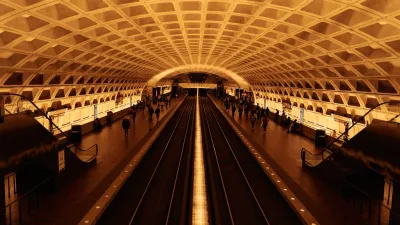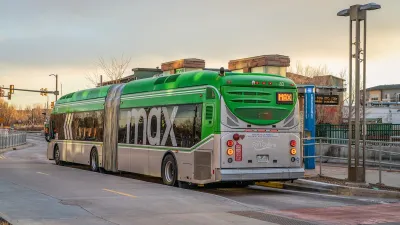A new study from U.S. PIRG and the Frontier Group projects three scenarios for Americans' future driving patterns that all fall short of current government projections. Transportation planning priorities should be reconsidered, the study contends.
"After decades of steady growth, U.S. driving rates have stagnated and even fallen. Per capita driving is as low as it was in 1996. And yet, federal and state government estimates continue to predict inexorable growth, relentlessly building expensive new highways for drivers who might not materialize," writes Tanya Snyder.
"A groundbreaking new study from U.S. PIRG and the Frontier Group shows that any of three likely scenarios for future U.S. driving trends show far lower vehicle miles traveled than any of the principal current government estimates. That creates a disconnect between the kinds of transportation Americans are choosing with their feet and the kinds of transportation the system is designing for them."
"The impact of all this unrealistic forecasting is that states are going into debt to lay asphalt no one wants to drive on," she explains. "Toll roads, which are increasingly popular with states because they provide a revenue source to pay private investors back, are falling far short of projected use all over the country."
FULL STORY: U.S. PIRG: The Driving Boom Is Over But the Road-Building Binge Continues

Alabama: Trump Terminates Settlements for Black Communities Harmed By Raw Sewage
Trump deemed the landmark civil rights agreement “illegal DEI and environmental justice policy.”

Planetizen Federal Action Tracker
A weekly monitor of how Trump’s orders and actions are impacting planners and planning in America.

The 120 Year Old Tiny Home Villages That Sheltered San Francisco’s Earthquake Refugees
More than a century ago, San Francisco mobilized to house thousands of residents displaced by the 1906 earthquake. Could their strategy offer a model for the present?

In Both Crashes and Crime, Public Transportation is Far Safer than Driving
Contrary to popular assumptions, public transportation has far lower crash and crime rates than automobile travel. For safer communities, improve and encourage transit travel.

Report: Zoning Reforms Should Complement Nashville’s Ambitious Transit Plan
Without reform, restrictive zoning codes will limit the impact of the city’s planned transit expansion and could exclude some of the residents who depend on transit the most.

Judge Orders Release of Frozen IRA, IIJA Funding
The decision is a victory for environmental groups who charged that freezing funds for critical infrastructure and disaster response programs caused “real and irreparable harm” to communities.
Urban Design for Planners 1: Software Tools
This six-course series explores essential urban design concepts using open source software and equips planners with the tools they need to participate fully in the urban design process.
Planning for Universal Design
Learn the tools for implementing Universal Design in planning regulations.
Clanton & Associates, Inc.
Jessamine County Fiscal Court
Institute for Housing and Urban Development Studies (IHS)
City of Grandview
Harvard GSD Executive Education
Toledo-Lucas County Plan Commissions
Salt Lake City
NYU Wagner Graduate School of Public Service





























